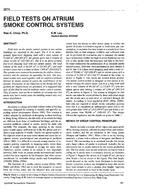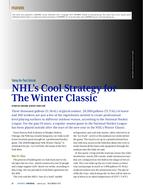When operating properly, the combination of a gas-fired condensing boiler with baseboard convectors and an indirect water heater is a viable option for high-efficiency residential space heating in cold climates. Based on previous research efforts, however, it is apparent that these systems are typically not designed and installed to achieve maximum efficiency. Outdoor reset curves, flow rates, baseboard capacity and control options were not optimized in any of the systems monitored.
In cooperation with the DOE’s Building America program, researchers attempted to determine the optimal combination(s) of components – pumps, high efficiency heat sources, plumbing configurations and controls – that result in the highest overall efficiency for a hydronic system where baseboard convectors are used as the heat emitter. Two distinct systems were designed and monitored for a full heating season: 1) a high mass condensing water heater, and 2) a condensing boiler with an indirect tank. The boiler was configured with the option to alternate between a standard primary/secondary loop and a buffer tank to analyze the effects of added mass on short cycling and overall system efficiency.
Thermostat setback was found to be the most economical mode of operation, despite the fact that control options that override the outdoor reset control were employed which reduced condensing. Specialized controls for overriding the outdoor reset control were found to drastically reduce response to thermostat setback. Short cycling, inherent in low-load homes, was drastically reduced by controls that cap the space heating input and by the introduction of mass.
This paper reveals the full results of the monitoring and outlines recommendations for ensuring quicker response, flexibility, and efficient operation. Proper sizing of the boiler and baseboards to address recovery from setback and optimal performance is discussed. Control strategies to help prevent short cycling and enhance occupant comfort are also presented. Researchers also suggest methods for minimizing the extreme system losses identified in this study.
Citation: ASHRAE Papers CD: 2014 ASHRAE Winter Conference, New York, NY
Product Details
- Published:
- 2014
- Number of Pages:
- 8
- File Size:
- 1 file , 2.1 MB
- Product Code(s):
- D-NY-14-C052


